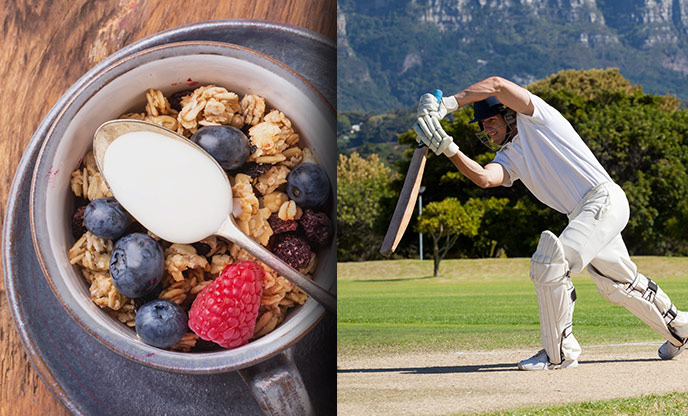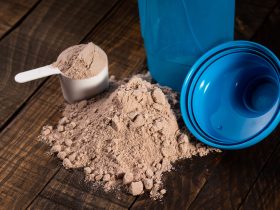
- Elite cricketers can have a busy training schedule with multiple sessions throughout the day. The intensity of sessions can range from low to very high. Cricketers, therefore, need to establish a daily base of nutrient-dense (minimally processed) foods, which can then be adjusted to meet the fuel and recovery needs of each session.
- Nutrition strategies should be individualized based on position in the team, the intensity of the session, goals of the session, body size, body composition goals, and the period of time before the next training session or game.
- Whole grains, fruit, vegetables, dairy products, lean proteins, and vegetarian alternatives are all important foods for cricketers. Nutritious carbohydrate foods are adjusted to match training demands.
- For example, on heavier training days, athletes can include extra snacks like fruit, yogurt, or wholegrain muesli bars around training. On lower workload days, higher protein (lower carbohydrate) snacks like tuna and crackers or boiled eggs and vegetable sticks with hummus are suitable and filling.
- Cricket can involve long hours of low-intensity activity and players can often find themselves gaining unwanted weight, particularly since processed high-fat foods and alcohol are common items in traditional breaks and after games!
Fluid needs
- Fluid needs depend on position, playing style, and weather conditions. Monitoring individual fluid losses is important as even relatively small fluid losses (~2% body weight) can negatively impact bowling accuracy, sprint speed, concentration, and the body’s ability to cool itself.
- Warm-ups, drinks, and meal breaks provide the main opportunities to top up fluid intake during a match. Other opportunities to drink include during over changes, the fall of wickets, and when waiting in the stands not playing.
- Training is the best time to establish good hydration habits and monitor changes in day-to-day fluid losses under different conditions. The Fluids in Sport Factsheet has a number of useful tips to help optimize hydration.
Please Share This Article

